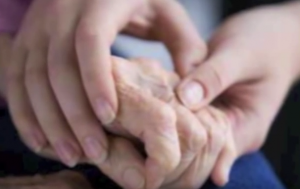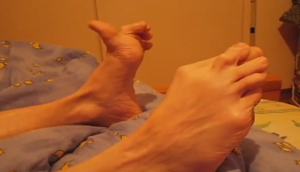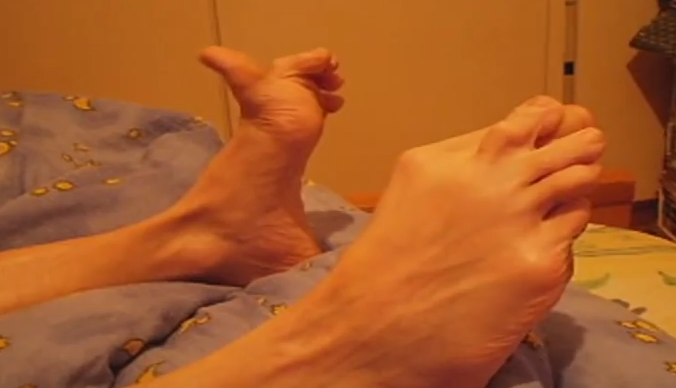Guillain Barre Syndrome is an autoimmune disease, wherein the body’s immune system erroneously attacks the peripheral nervous system. There is a quick muscle weakness starting at the feet and legs and then quickly moving up to the other parts of the torso. The symptom occurs in half a day and lasts for two weeks. However it can be life threatening as the disorder enters an acute phase causing weakness in the muscles controlling the respiratory process. This can lead to abnormalities in heart rate and rise in blood pressure. This rare condition can lead to paralysis and even death. The symptom is named after two French neurologists Guillain Georges and Jean Alexandre Barré, who did extensive work on the subject.
Signs and symptoms of Guillain Barre Syndrome
The first symptom is the feeling of a tingling sensation or numbness in the legs. The neck muscles are also affected and so are the cranial nerves which control the head and face. Many people who are affected by this syndrome, show signs and symptoms that lasted from four to six weeks. However in children below six years of age, it is difficult to come to a conclusion as the initial condition of the child will show some viral infection.
Respiratory failure
Weakness in the muscles that control the breathing can lead to respiratory failure. This life threatening scenario is further complicated by an attack of pneumonia, blood clots and bleeding in the digestive tract. At least about sixty per cent of the patients who suffer from respiratory failure need to be kept on the ventilator.
Autonomic dysfunction
The control of the body functions is usually handled by the involuntary nervous system. The heart rate and blood pressure is affected following the attack of this syndrome. About twenty per cent of the patients have found to be having severe fluctuations in the blood pressure and irregularities in the heart beats. When it comes to a point where the heart ceases to beat , a pace maker is recommended.
Guillain Barre Syndrome – Causes
Patients affected by this syndrome have been found to have an infection before the onset of this condition. This was found in at least two thirds of the cases. The most common infection was that of gastroenteritis; about thirty per cent of the cases were found to be suffering from diarrhea. Tropical viral infections such as dengue fever has been found to be associated with this syndrome. The influenza virus has also triggered the syndrome. In such cases vaccination is administered, and the benefit from vaccination is to prevent the influenza from taking a bigger form.
The Brazil Health Ministry reported that there was a connection between people who had the Zika virus and Guillian Barre Syndrome.
Diagnosis
The diagnosis depends on the findings of the absence of reflexes, absence of fever and the rapid development of facial paralysis. A lumbar spinal puncture is conducted on the patient suffering from this syndrome so that cerebrospinal fluid analysis can be done. Antiganglioside bodies are also examined for finding if the patient is suffering from this syndrome. Even a low level of sodium in the blood could lead to the patient having this disorder. Also an MRI can be conducted and if it is found that the nerve roots are enlarged one can conclude that that patient has this problem.
Guillain Barre Syndrome – Treatment
There are two immunotherapy treatments for this disorder. The first one is Plasmapheresis and the second one is Intravenous immunoglobulins. In the first form of therapy, attempts are made to reduce the body’s attack on the nervous system. This is done by filtering out the antibodies from the bloodstream. This treatment is found to be very effective. The recovery speed of the patient with this therapy is remarkable as the result can be seen within two weeks of this treatment. In respiratory failure, incubation of the windpipe is needed and the patient needs to be put on the ventilator.
Prognosis
Patients suffering from this syndrome can also have other complications which could lead to their death. The various complications could be due to blood clots, severe infection or even a cardiac arrest. However there is a variation in the rate of recovery depending on age of the patient. It is found that patients over the age of forty take a longer time to recover. It is found that those suffering from diarrhea take even more time to recover.
Research has shown that on a scale of zero to six, one can grade the recovery graph. In this graph, zero indicates completely healthy, one indicates a very minor symptom, two would indicate that the patient is able to walk and run, three would mean the patient would need a walking stick for support, four would mean that the patient would be restricted to the bed, five would indicate long term respiratory support and six would mean death. A patient suffering from this syndrome could experience fatigue or tiredness, severe pain and difficulty in doing ones daily chores. Around forty per cent of the affected people would require extensive rehabilitation that could include physical therapy and also the advice of psychologists, social workers and nurses.
Guillain Barre Syndrome – Pictures


